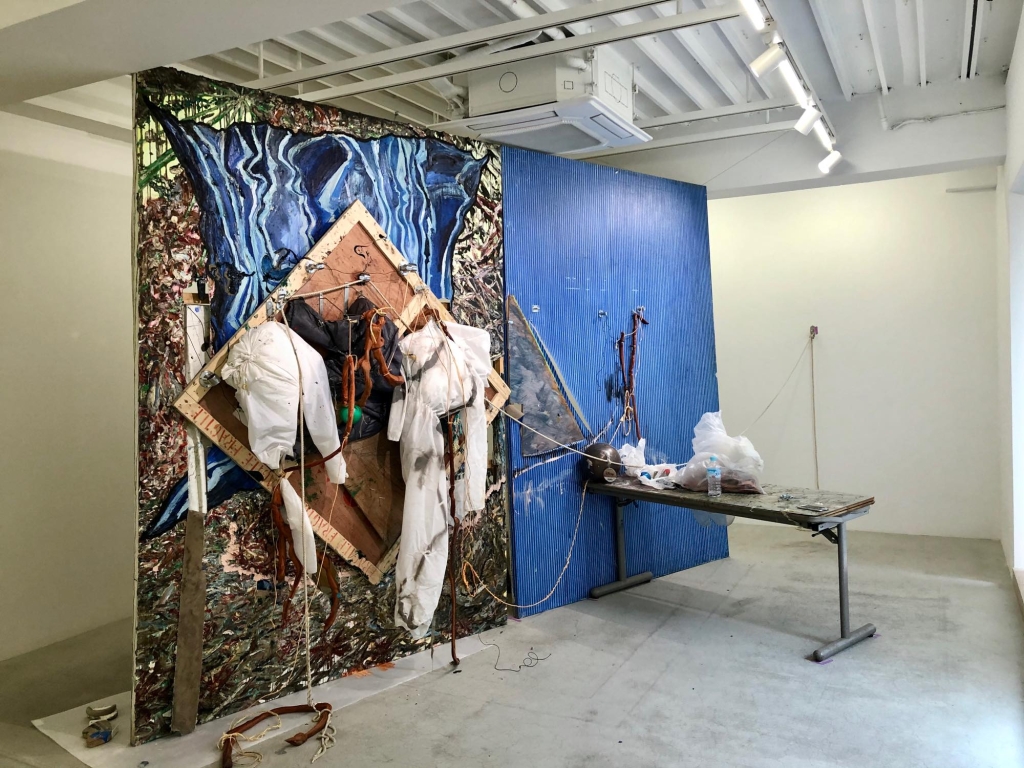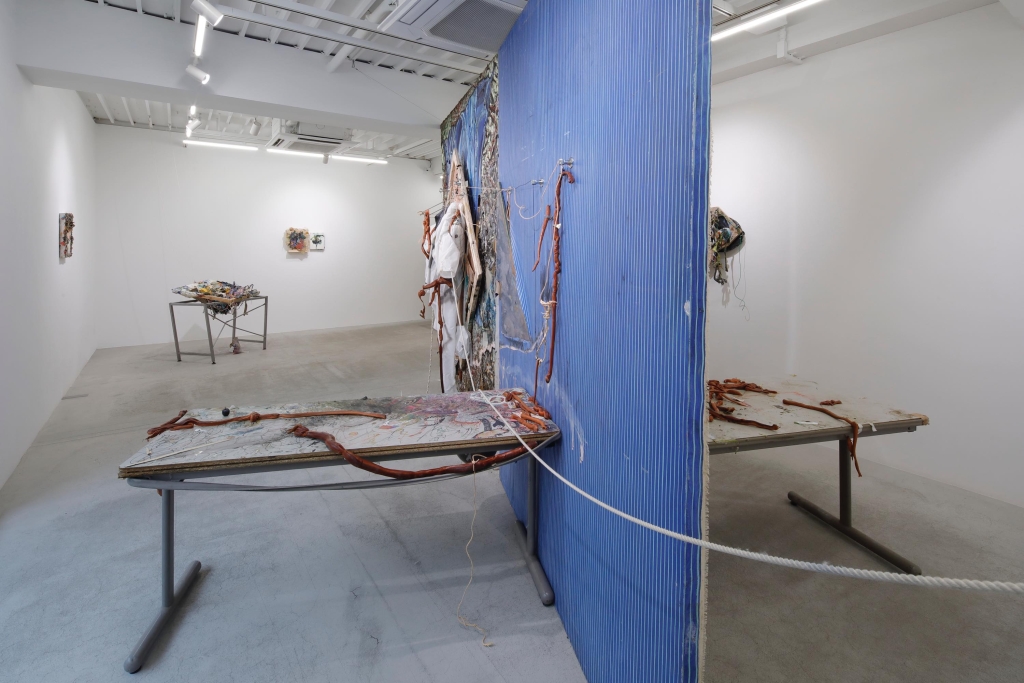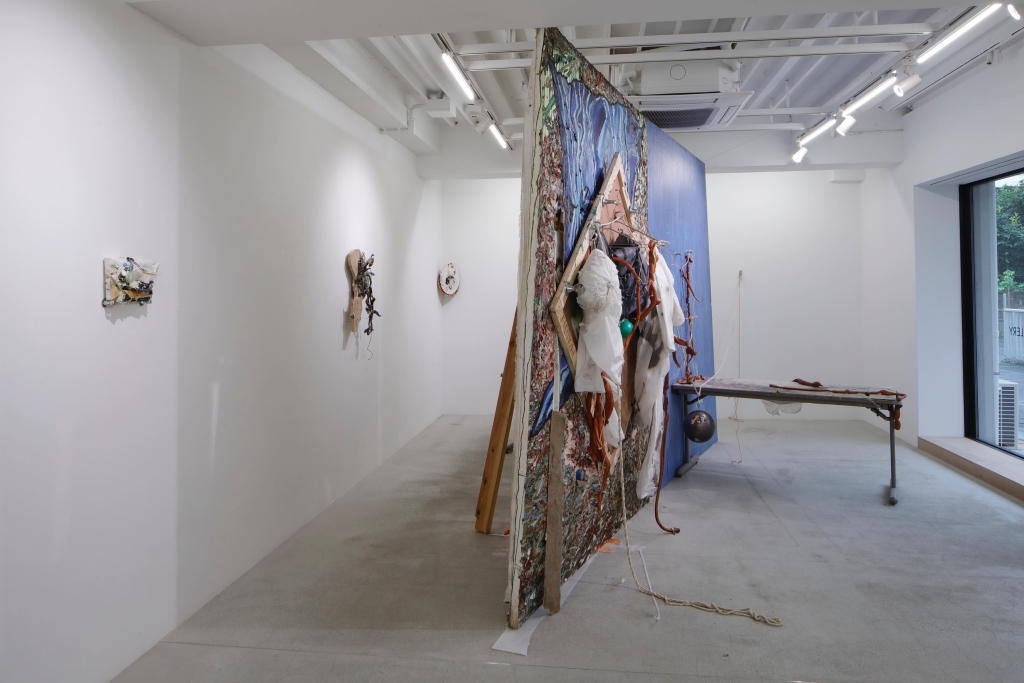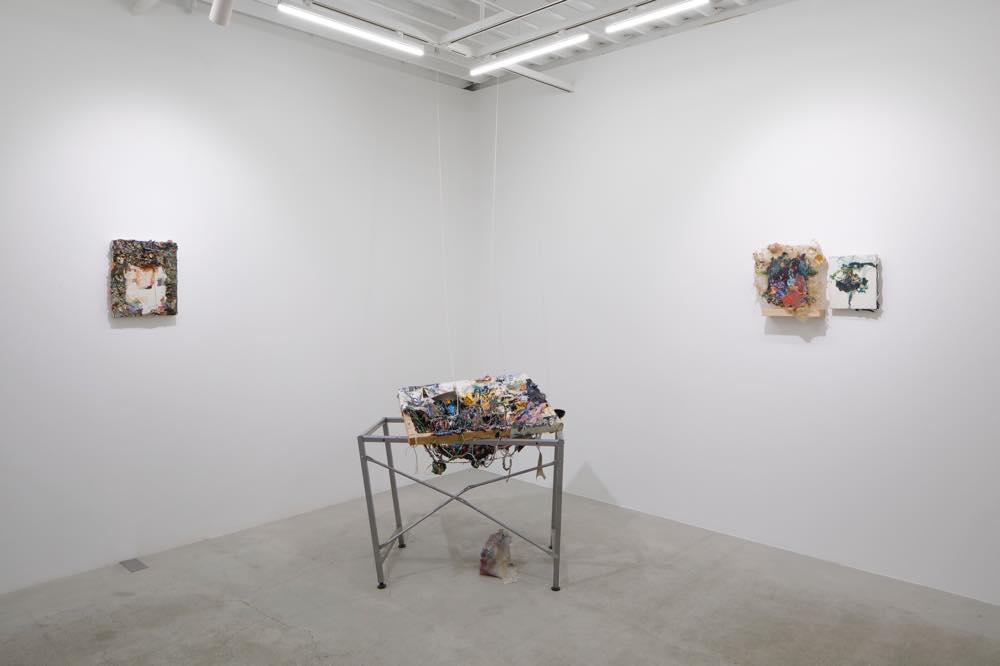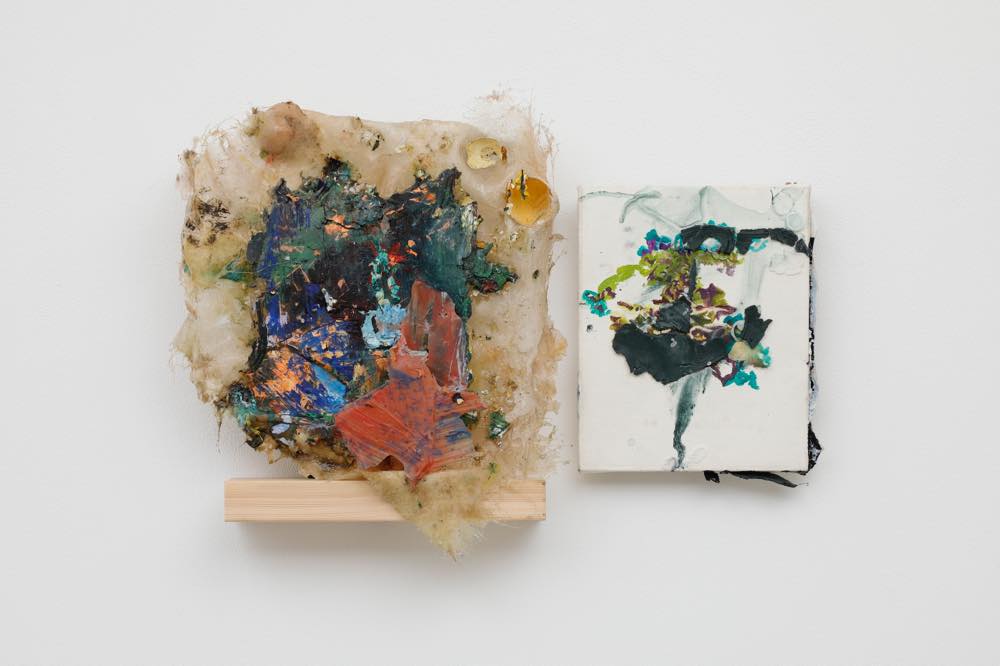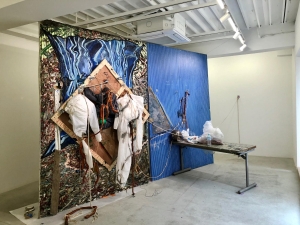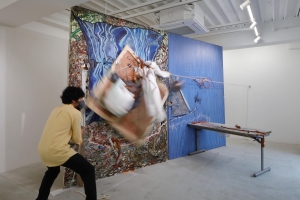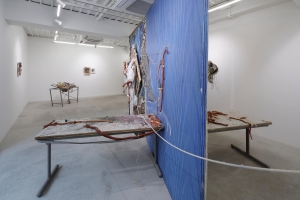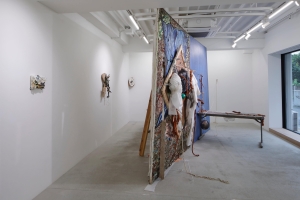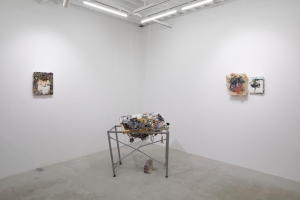Past
Yurai Muuki
Yuki Murai
Jul 1 (Wed.) - Aug 1 (Sat.), 2020
MAHO KUBOTA GALLERY is proud to present “YuraiMuuki”, a solo exhibition of Yuki Murai starting from June 1.
Yuki Murai is a full-fledged artist who continues to explore his individual style of painting, armed with an approach to art that involves uncompromising, non-stop thinking and a powerful ability to break through barriers. This exhibition presents a body of work that reveals an overwhelming passion going beyond simplistic theories about painting, driven by Murai’s indomitable artistic practice. His installations consisting of non-standard works—such as large-scale ‘moving paintings’ that transcend stereotyped discourse of physicality and ‘paintings with moving parts’—shake the viewer’s control over his or her imagination, leading to a profound encounter with painting.
Artist statement for Yuraimuki
YuraiMuuki is a practice of pseudo-fusion between paint and humanity, a place that gives an instant sense of the symbiosis of heterogenous entities.
If ‘physicality’ is considered to emerge from a place where an image develops from observation of a subject, painting has played the role of a tool for mimicry to embody or realize that physicality.
To relieve paint from that responsibility, it needs to be a moving object that exerted gravity at an origin pre-existing the formation of an independent image.
“When you plunge into the darkness of the woods at night, your retinas no longer produce clear images, but your body begins to develop a keen sense for your circumstances. If you hear what sounds like an animal or something else tramping through the undergrowth, you can’t be sure of what is going on, and you lose control of your imagination. I plot a path that leads to whatever is inside the black hole, showing the viewer and the paint the way forward.”
***********
Yuki Murai is a full-fledged artist who continues to explore his individual style of painting, armed with an approach to art that involves uncompromising, non-stop thinking and a powerful ability to break through barriers. From this body of his work emerges an overwhelming passion going beyond simplistic theories about painting, driven by Murai’s indomitable artistic practice. This can be seen from the following part of his statement for the exhibition.
“When you plunge into the darkness of the woods at night, your retinas no longer produce clear images, but your body begins to develop a keen sense for your circumstances. If you hear what sounds like an animal or something else tramping through the undergrowth, you can’t be sure of what is going on, and you lose control of your imagination. I plot a path that leads to whatever is inside the black hole, showing the viewer and the paint the way forward.”
The artist also makes the following comment.
The term “physicality” that is often used in art begins to feel super wrong. In the final analysis, each viewer looks at the traces in the medium made by movement and imagines a rough afterimage. If that is the case, everything has physicality, and people can imagine whatever kind of movement they want. How is the artwork moving? How does it move when viewed? And as the one viewing it, how do I move?
When people talk about physicality in painting, you often encounter views that refer to physicality as the traces of interference between the body and medium, such as Kazuo Shiraga’s use of the movement of his body to paint or Jackson Pollock’s dripping technique. However, if the physicality of painting is defined in terms of the movement of the medium and the artist’s body, painting cannot exist without physicality, except for cases in which computer-programmed machines do the painting or the painting was made by an artificial intelligence from the start.
Today, science is envisioning reality at a new stage brought about by artificial intelligence and augmented environments. At the same time, however, we dream of a sustainable world. Thinking about the near future, we have to question what will remain as the distinctive characteristics of art and painting?
Speaking of the future in art brings to mind the Italian futurist works of the early twentieth century. Futurists introduced the concepts of time and space in painting, as well as sculpture, and expressed movement through techniques similar to the stop motion stills used in film. This included the movement of people, and futurism definitely saw the future of the advancing machine civilization in a positive light. However, when you look at futurist art today in 2020, while you can recognize its aesthetic value, you also can’t help remembering the dark side of how the movement was linked with anarchism and militarism. As a result of viewing development as an absolute good and rushing ever onward, one is left with the feeling that something important is missing.
Today, it goes without saying that physicality isn’t simply an indication of bodily movement. All reactions and movements of our bodies are controlled by our brains. The brain continually controls both bodily movement and the unseen ‘movement’ taking place within us—in other words, our thoughts. While awake, it is almost impossible to stop thinking. Our minds continue to function even during sleep.
Murai’s depiction of the self plunged into the darkness of the woods at night truly highlights this kind of nonstop thought, contemplation, and state of compulsive thinking. Robbed of sight by the darkness, ‘I’ (the self) become aware of an entire world of things that can’t be captured by my retinas. And, as I focus my attention on my own breathing, I realize that the world is part of ‘me,’ rather than something that stands in opposition to me, and I am part of the world. And as I realize this, the boundaries between me and the world become more and more unclear. What exactly is painterly expression when viewing things from that perspective? It most certainly doesn’t look like the beautiful picture hanging on the wall that we normally expect.



